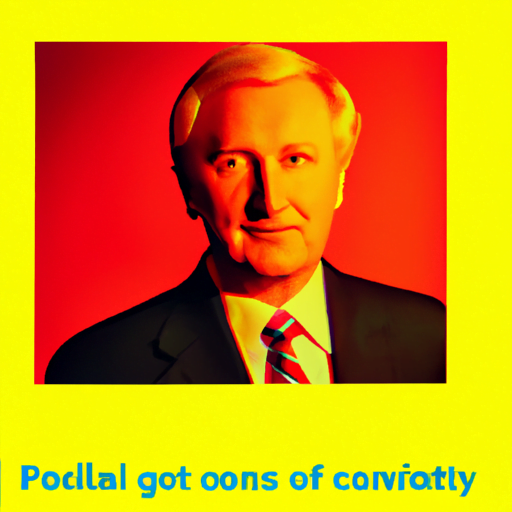
-
Table of Contents
- Designing for Political Campaigns: Persuasion through Visuals
- The Power of Visual Communication
- Case Studies: Successful Visual Design in Political Campaigns
- 1. Barack Obama’s “Hope” Poster
- 2. Jacinda Ardern’s “Be Kind” Slogan
- 3. Emmanuel Macron’s “En Marche!” Movement
- Design Principles for Political Campaigns
- 1. Simplicity
- 2. Consistency
- 3. Authenticity
- 4. Emotional Appeal
- The Role of Digital Design in Political Campaigns
- 1. Responsive Design
- 2. Social Media Graphics
- 3. Video Content
- Conclusion
Designing for Political Campaigns: Persuasion through Visuals

Political campaigns are a crucial part of the democratic process, and in today’s digital age, visual design plays a significant role in shaping public opinion and influencing voter behavior. Effective design can help political candidates convey their message, establish their brand, and connect with their target audience. In this article, we will explore the importance of designing for political campaigns and how visuals can be used to persuade and engage voters.
The Power of Visual Communication
Visual communication is a powerful tool that can evoke emotions, convey complex ideas, and leave a lasting impact on viewers. In the context of political campaigns, visuals can help candidates establish their identity, communicate their values, and differentiate themselves from their opponents. Here are some key reasons why visual design is crucial in political campaigns:
- Memorability: Well-designed visuals are more likely to be remembered by voters. A compelling logo, a visually appealing website, or a memorable campaign poster can leave a lasting impression and increase the chances of a candidate being recognized and recalled during the election.
- Emotional Appeal: Visuals have the power to evoke emotions and create a connection with the audience. By using colors, typography, and imagery strategically, political campaigns can tap into the emotions of voters, whether it’s hope, trust, or a sense of urgency.
- Accessibility: Visuals can make complex political messages more accessible to a wider audience. Infographics, charts, and visual storytelling techniques can simplify complex policies and make them easier to understand and engage with.
- Brand Building: Just like in marketing, political campaigns need to establish a strong brand identity. Visual design elements such as logos, color schemes, and consistent typography can help candidates create a recognizable and cohesive brand that resonates with their target audience.
Case Studies: Successful Visual Design in Political Campaigns
Let’s take a closer look at some successful political campaigns that effectively used visual design to persuade and engage voters:
1. Barack Obama’s “Hope” Poster
During the 2008 presidential campaign, artist Shepard Fairey created a now-iconic poster featuring Barack Obama with the word “Hope” underneath. This simple yet powerful design became synonymous with Obama’s campaign and effectively conveyed his message of optimism and change. The poster’s bold colors, stylized portrait, and minimalistic design made it instantly recognizable and widely shared, both online and offline.
2. Jacinda Ardern’s “Be Kind” Slogan
In the 2020 New Zealand general election, Jacinda Ardern’s campaign focused on the slogan “Be Kind.” This simple phrase, accompanied by a heart symbol, became a central theme of her campaign and resonated with voters. The visual design of the slogan, with its friendly typography and warm colors, reinforced Ardern’s compassionate and inclusive image.
3. Emmanuel Macron’s “En Marche!” Movement
Emmanuel Macron’s successful presidential campaign in France in 2017 was built around the visual identity of his “En Marche!” movement. The campaign’s logo, a blue and pink graphic symbolizing unity and progress, was prominently featured on campaign materials, social media, and merchandise. The consistent use of this visual element helped create a sense of unity and cohesion among Macron’s supporters.
Design Principles for Political Campaigns
Now that we have seen the impact of visual design in political campaigns, let’s explore some key design principles that can help create effective campaign visuals:
1. Simplicity
Political campaign visuals should be simple and easy to understand at a glance. Cluttered designs can confuse and overwhelm viewers, diluting the intended message. By using clean layouts, minimalistic typography, and clear imagery, campaigns can ensure that their visuals are easily digestible and memorable.
2. Consistency
Consistency is crucial in political campaign design. All campaign materials, from posters to social media graphics, should adhere to a consistent visual identity. This includes using the same color scheme, typography, and logo across all platforms. Consistency helps build recognition and reinforces the candidate’s brand.
3. Authenticity
Authenticity is key in political campaigns. Voters are increasingly skeptical of polished and overly staged visuals. Campaigns that embrace authenticity and showcase the candidate’s genuine personality are more likely to resonate with voters. This can be achieved through candid photographs, behind-the-scenes footage, and relatable design elements.
4. Emotional Appeal
Emotions play a significant role in decision-making, including voting decisions. Political campaigns should aim to evoke emotions that align with their message and values. This can be achieved through the strategic use of colors, imagery, and typography. For example, warm colors like red and orange can evoke passion and energy, while blue can convey trust and stability.
The Role of Digital Design in Political Campaigns
In today’s digital age, political campaigns heavily rely on digital platforms to reach and engage voters. Digital design plays a crucial role in creating effective campaign visuals for online channels. Here are some key considerations for digital design in political campaigns:
1. Responsive Design
With the increasing use of mobile devices, political campaigns must ensure that their digital designs are responsive and optimized for different screen sizes. Responsive design allows campaign websites, social media graphics, and email newsletters to adapt to various devices, providing a seamless user experience.
2. Social Media Graphics
Social media platforms are powerful tools for political campaigns to connect with voters. Campaigns should create visually compelling graphics that are shareable and resonate with their target audience. Infographics, quote graphics, and visually appealing campaign updates can help campaigns stand out in crowded social media feeds.
3. Video Content
Video content has become increasingly popular in political campaigns. Campaigns can leverage video design to create engaging and persuasive content. Whether it’s campaign ads, candidate interviews, or behind-the-scenes footage, well-designed videos can capture viewers’ attention and deliver the campaign’s message effectively.
Conclusion
Designing for political campaigns is a powerful tool for persuasion and engagement. Visual design plays a crucial role in establishing a candidate’s brand, conveying their message, and connecting with voters. By understanding the power of visual communication, studying successful case studies, and applying key design principles, political campaigns can create compelling visuals that leave a lasting impact on voters. In today’s digital age, digital design considerations are also essential to ensure effective communication across various online platforms. Ultimately, effective design can help political campaigns stand out, resonate with voters, and make a lasting impression.
